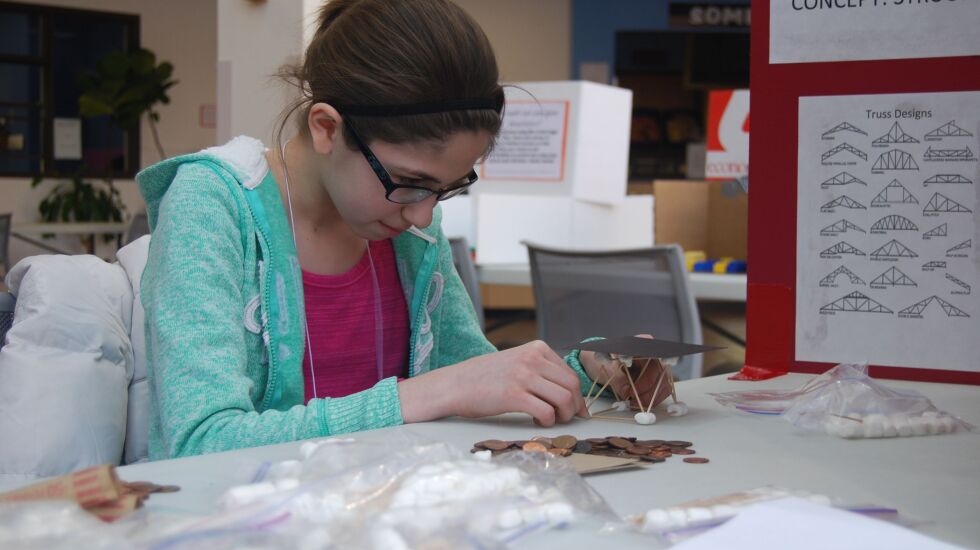
I was just 8 years old when doctors in the Chicago area diagnosed me with a heart condition. Many surgeries later, they put me on the waiting list for a heart transplant. Eleven years ago, at 17, I received the heart that’s given me a second chance at life.
During those long years of treatment, I became fascinated with cardiology. I realized that pursuing a career in biomedical engineering would allow me to work with others who have cardiovascular challenges while helping develop devices for a new generation of young people with heart problems.
Today, that’s exactly what I do.
Along the way, I was lucky to find encouraging teachers and mentors — and now, I work at a company where many of my colleagues are women. But that’s not the case for all female biomedical engineers. That underrepresentation can discourage women considering these fields. It poses a bigger-picture problem, too: It threatens our nation’s economic future.
Women have made impressive strides toward educational and workplace equity in recent years. Between 1970 and 2019, the percentage of working women with a college degree quadrupled. Today, women account for nearly 60% of undergraduates, a larger share than at any time in U.S. history.
As recently as 1960, women were only one-third of the overall U.S. workforce. By 2021, nearly half of the workforce was female. And Illinois women participate in the labor force at a higher rate than the national average.
Women have made progress in some STEM fields, too. But unfortunately, gains in the science, technology, engineering and math professions have been less dramatic. Nationwide, just over one-third of higher-education STEM degrees go to women.
Things are slightly better in Illinois. In 2019, women earned 37.1% of STEM degrees. But progress has been slow. The share of STEM degrees earned by women in Illinois has increased 1% since 2010, according to research from the Illinois Science and Technology Coalition.
A missed opportunity
Among STEM professions — which include everything from electrical engineering to software development to molecular biology — women make up just 27% of the workforce both nationally and in Illinois. In engineering occupations like mine, women make up just 15% of all workers. This gender gap represents an enormous, missed opportunity.
America’s shortage of STEM workers will soon reach critical levels. Federal estimates put future STEM employment needs at more than 1 million more workers by 2031. In other words, there are lots of good STEM jobs to be had for women, if we can bring about greater gender parity.
But this is about more than shoring up our broader economic health. I also wish more women could have the kinds of stimulating, meaningful and gratifying professional experiences STEM can offer.
There’s no simple way to achieve that goal.
One place to start is making sure today’s young women have opportunities to discover and be inspired by STEM subjects at an early age. Some of this outreach can be done by individuals, when women in STEM make a deliberate effort to connect with girls, expose them to our jobs and areas of expertise and even mentor them.
It’s also up to employers to bring more young women into the fold early in their education. The company I work for, Abbott, recruits young women and members of other underrepresented groups as early as high school for internships in engineering, manufacturing and information technology. Early work experience can show these future professionals that careers in STEM are not only possible, but highly rewarding.
More firms need to make such efforts a priority, treating them as investments in the future of their companies and the economy.
I’m fortunate to have been born when I was. Not only have I undergone a successful heart transplant, I’m also witnessing a transformational moment during which women are starting to take their place as equal participants in the sciences.
However, too many young women still face long odds when it comes to learning about, exploring and entering STEM careers. Both for their benefit and the good of the economy, we must find ways to bring more of them in.
Mackenzie Tannhauser is a field clinical specialist in the vascular division at Abbott, a global healthcare technology company headquartered in the northern Chicago suburbs.
The Sun-Times welcomes letters to the editor and op-eds. See our guidelines.
Send letters to letters@suntimes.com
The views and opinions expressed by contributors are their own and do not necessarily reflect those of the Chicago Sun-Times or any of its affiliates.







